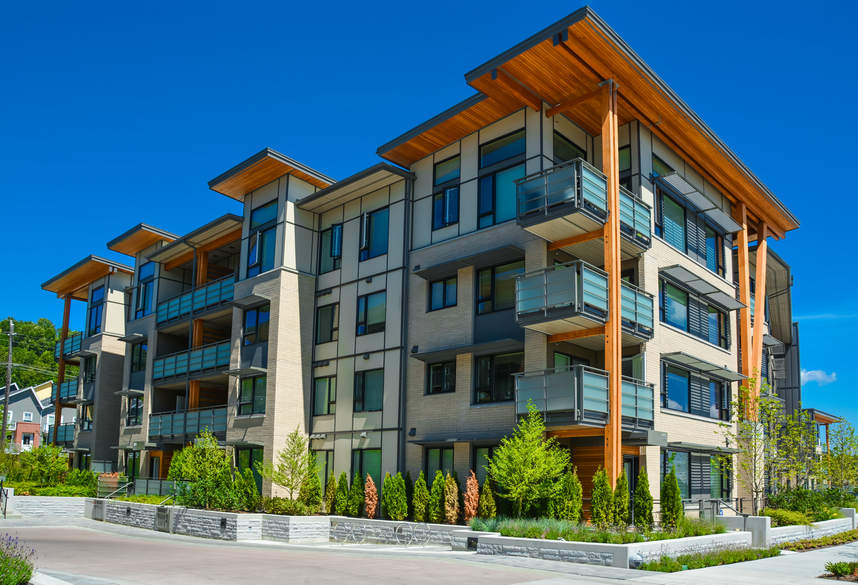
Best Investment in Commercial Real Estate
Although many people first think of residential real estate when they hear "real estate investing, commercial real estate is where many might discover special investment opportunities. Which one, though, would be ideal for your situation?
We demystify this terrain below, breaking out the many kinds of properties on offer, their possible returns, and risk considerations. Making wise selections that fit your investment objectives and risk tolerance depends on knowing the dynamics of commercial real estate, regardless of your level of experience with investing.
Commercial real estate include offices, retail stores, warehouses, apartment or housing complexes including five or more units. Usually including leasing these areas to companies, earning revenue in commercial real estate can offer benefits like longer leases, better rental yields, and more value appreciation than in residential real estate. This industry does, however, usually need more complex managerial responsibilities, higher upfront costs, and be more sensitive to economic changes.
Types of Commercial Real Estate Investments
One should be aware of the many forms of commercial real estate before making investments in it. Usually, four groups define commercial real estate:
Office Industrial Multifamily Residential Retails

You may divide every group even further. Retail, for instance, comprises stand-alone businesses, strip malls, eateries, big-box stores, fitness centers, family entertainment centers, regional malls, and major shopping centers.
Particularly with offices or residential buildings, commercial real estate can be allocated a class that characterizes its age, location, and state of repair. In a local real estate market, the classification of properties is more loosely done under a consensus among developers, brokers, agents, appraisers, and analysts as there is no regulating organization supervising it.
-
The newest, best-location Class A buildings demand less upkeep and are These are first-rate properties with excellent design, construction, and finishing; conveniences attached to the property; great access; and instant marketability. Class A buildings get top-notch renters and earn the best rates.
-
A bit older and maybe not in the ideal places are Class B buildings. Regarding location, facilities, design, and general condition, these fall short of class A. These fetch lower rent rates than class-A buildings, so they are accessible to a wider spectrum of renters even if their quality is still high. Investors trying to raise a profitable property they can sell also find them appealing.
-
Often over twenty years old, class C buildings are the oldest. If they are younger, their facilities, architecture, and construction are at best acceptable. Usually in significantly less appealing locations, they might require significant repairs and rehabilitation. High vacancy rates might mean that tenants of multifamily buildings have unpredictable income sources or worse credit ratings. Many times, these qualities are purchased to raze, convert, or rebuild in order to better their state.
Office
-
Office real estate is basically self-explanatory. Among these are medical offices, single-tenant office buildings, midrise structures in suburban locations, and high-rises downtown. Specialized uses for offices can include a dentist's office, a tiny laboratory, or a remote distribution center.
-
Since the COVID-19 epidemic, the condition of office real estate has changed drastically. Major vacancies and decreases in the value of office leases follow from the surge in remote employment.
-
A December 2023 survey by Commercial Edge, a leading commercial real estate consultant, indicates that office use stays at 50% to 60% of pre-pandemic levels. Commercial Edge and McKinsey find in their 2023 research of this industry that rather than sales and rentals rising as we go further away from the peak of the epidemic. Office real estate sales at the end of 2023 barely matched 38% of 2022 year over year. The national office vacancy rate stays somewhat persistently at slightly over 18%.
-
More broadly, McKinsey advises, demand for retail and office space will stay below pre-pandemic levels. Under the "moderate" scenario, 13% less offices will be needed in 2030 than in 2019 despite with projected population growth. Its "severe" scenario may see a more than 35% drop.
-
Office space is thus a dangerous investment. Should remote work continue to be the standard, office real estate could not bounce back or has to be creatively converted, which can be expensive. Loans might come due in the meantime before per-space lease rates recover, therefore aggravating foreclosures, raising vacancy rates, and lowering per-square-foot values.
Industry

-
In industrial real estate, buildings and structures used for production, more extensive shipping operations, or logistics. Industrial real estate would thus include warehouses, factories, and sites utilized for assembly.
-
Industrial real estate has the advantage in that leases are more predictable for investors as they often span lengthy terms and are consistent. Many industrial buildings, nevertheless, must be tailored for certain purposes. Should a company cancel its contract, the building could require significant renovations to draw in new business. It is also more difficult to diversify among several tenants as the buildings are usually spacious and dependent on a single resident.
-
Early 2020s industrial real estate has been among the classes of real estate performing really well. Different real estate assets are tracked by the National Council of Real Estate Investment Fiduciaries (NCREIF). Its index indicates that, compared with a drop of 8.39% for all commercial real estate during that period, industrial real estate dropped 5.3% from the fourth quarter (Q4) of 2022 to the third quarter (Q3). In an October 2023 study, the National Association of Realtors (NAR) cites comparable results but notes that the industrial real estate market has had a 43% rise in square footage over the last year, a great distance from other sections of commercial real estate suffering reductions. Though continued development might be hampered should the economy stall, rent for warehouses and logistics facilities in 2023 saw the highest rise in previous years.
Multiple Family Rental
-
In urban settings, multifamily rental properties are apartment buildings, town homes, and multi-unit developments akin to high-rises. They also include condominiums and mobile home parks as people live there long term (they count as residential only if there are four or less units). This kind of property can include duplexes, triplexes, and quadplexes; many lenders let standard residential mortgages be used to buy smaller multifamily properties.
-
The NCREIF Property Index shows that apartments have somewhat outperformed other commercial buildings, declining 7.55% against a decline of 8.39% for all commercial real estate from Q4 2022 to Q3 2023. The countrywide decrease in rents is mostly responsible for this fall. As of December 2023 the median rent was $1,967; in August 2022 it peaked at $2,054.
Retail
-
Retail buildings are those utilized by businesses physically located to provide goods or services to consumers. Retail covers supermarkets, strip malls, community centers, big-box stores, regional malls, restaurants, athletic clubs, and family entertainment centers.
-
Falling just 1.39% against an overall decline of 8.39% for commercial real estate from Q4 2022 to Q3 2023, the NCREIF Property Index indicates this has been a top-performing section of the commercial real estate market.
Particularly Designed Commercial Real Estate

-
Hotel, motel, extended-stay hospitality, and resort hospitality commercial real estate Short-term stays take front stage, and the facilities range from opulent high-end hotels to simple motels. Location, travel trends, brand affinity, and operational management all affect the value of investments in hotel real estate. The industry may be rather cyclical, with macroeconomic events influencing seasonally varying revenues. According to an October 2023 NAR report, revenues are up 13% over the same time while the average daily rate for rooms is 17% over pre-pandemic numbers.
-
From multi-unit residential complexes for communities of older adults, to assisted living and independent living communities built with particular amenities and services for older adult residents with disabilities and other needs, to skilled nursing facilities run more like hospitals than homes, this heading captures very different types of housing.
-
Serving the elderly population, this industry has different opportunities and problems for investors. One in five Americans will be 65 or above by 2030; all baby boomers will be older than 65. U.S. Census Bureau estimates show that older persons will exceed children for the first time in American history by 2034. Properties that appeal to this main population offer consistent income as demographic patterns rather than economic cycles define the demand. In places where the population is aging most, they might particularly appeal as investments. You may also read this: Understanding The Role Of A Real Estate Attorney
Advantages And Hazards Of Commercial Real Estate Investment
You should weigh the benefits and drawbacks of investing in commercial real estate before you do. Though it is exposed to the vagaries of the real estate market and the economy, commercial real estate may provide stable income and growth possibilities.
Pros
-
Regularly returning. Regular rent payments for commercial real estate investors allow them to see consistent returns.
-
passive income. Particularly if you rely on an investment fund or property management company, commercial real estate investments might be passive.
-
Change in capital value. Apart from regular rent payments, commercial buildings might appreciate in value, therefore providing two kinds of return.
-
Apply leverage. Many investors assist finance their real estate purchases with loans. Although it raises risk, such usage of leverage can boost return potential.
Cons
-
Extreme expenses. Real estate used commercially may be expensive. Many investors can depend on loans to buy a house or pool money with others.
-
Variations in the market The real estate market is really rather erratic. Investors may have to deal with high vacancy rates, as seen by the present high vacancy in office buildings and a declining value of the assets they hold.
-
property control. Success depends on good management of property. This implies either hiring a reliable firm to manage these chores or knowing how to supervise and preserve the property and your tenant contacts.
Tips for Successful Commercial Real Estate Investing

First of all, looking for diversity would be advice for success in commercial real estate investment. You are depending just on that one property and renter if you just have one and want success from them. Should the building lose value or the renter cease paying, you might experience financial losses.
Reducing risk would be achieved by diversifying—buying one property with numerous renters or investing in several properties. Examining other types of real estate assets, like commercial real estate investment trusts (REITs), which are traded like stocks but must deliver 90% of their taxable revenue in dividends yearly, helps you diversify as well.
Another smart approach is getting to know local specialists in real estate as well as investors. Using your network will enable you to be aware of local prospects and contacts to contractors and others able to assist with maintenance and building improvements.
At last, do your homework before committing to any offer. Run the figures on the offer to ensure a decent profit possibility. Think also through the worst-case situation and how you would bounce back from it.
Under what factors should I weigh commercial real estate investments?
Examining the best- and worst-case scenarios for the property helps you evaluate a possible commercial real estate investment. Will its price probably rise or fall? Where is it located, and how would that place help the tenant to succeed? If necessary, could you make use of the land? At last, devote careful attention to the possible return on investment and ensure it is sufficient to bear the risk.


